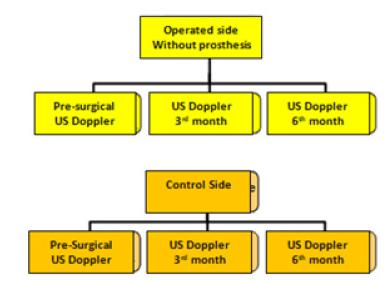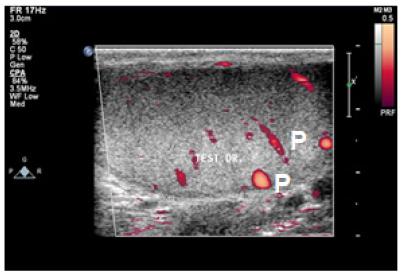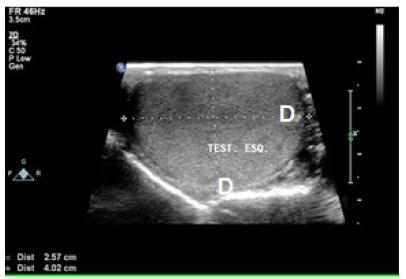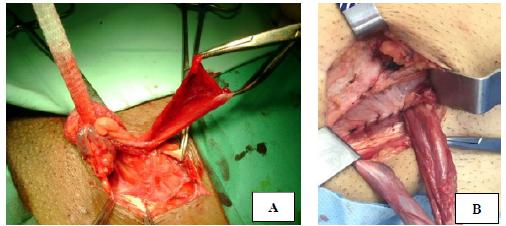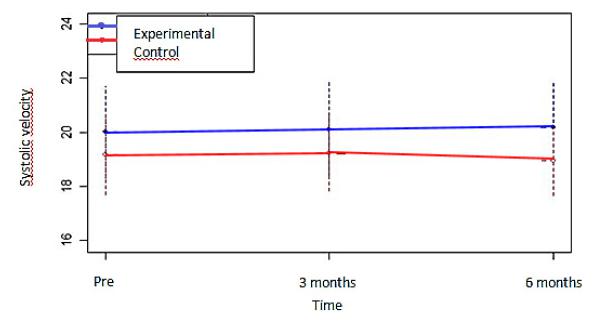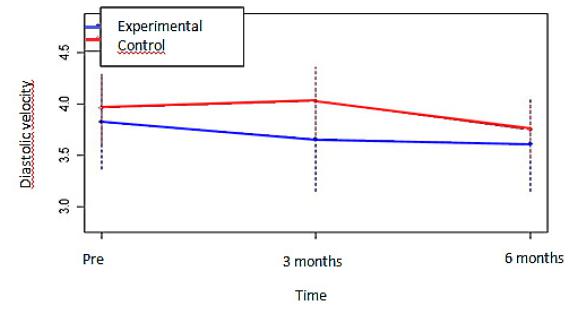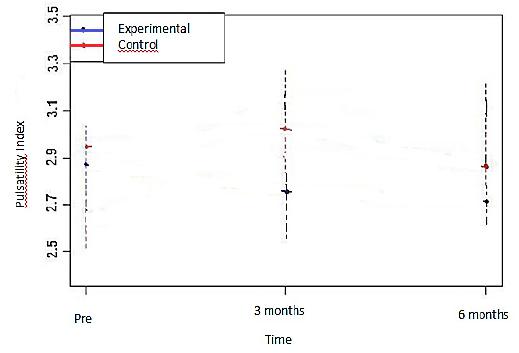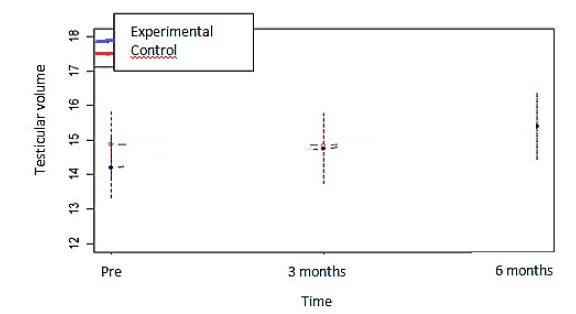Abstract
Purpose:
To evaluate the behavior of arterial circulation and testicular volume in patients submitted to conventional inguinal hernia repair without the use of a synthetic prosthesis to reinforce the posterior wall.
Methods:
A prospective observational clinical trial was performed on 26 male patients with unilateral inguinal hernia types I and II by the Nyhus classification, who underwent surgical correction using the modified Bassini technique. Bilateral Doppler ultrasonography was performed preoperatively, at the third and at the sixth postoperative month. The studied variables were: systolic peak velocity (SPV), diastolic peak velocity (DPV), resistance index (RI), pulsatility index (PI) and testicular volume.
Results:
There were no statistically significant changes over time in the variables studied on the operated side: SPV (p = 0.916), DPV (p = 0.304), RI (p = 0.879), PI (p = 0.475), and testicular volume (p = 0.100). The variables on the control side also did not change statistically until the sixth postoperative month: SPV (p = 0.784), DPV (p = 0.446), RI (p = 0.672), PI (p = 0.607), and testicular volume (p = 0.413).
Conclusion:
Surgical correction of the inguinal hernia without the use of a prosthesis does not cause alterations in vascularization and testicular volume in the first six months postoperatively.
Key words:
Hernia, Inguinal; Regional Blood Flow; Testis; Ultrasonography, Doppler.

